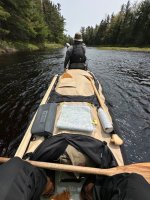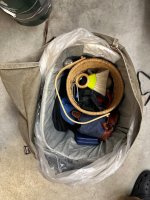I wonder why the different styles of containers ?? Variety is the spice of life ??
Sure, and many folks here use a variety of modern material soft and hard waterproof bags, containers, buckets and barrels.
However, some folks prefer to use more traditional canoes, such as wood/canvas, and more traditional paddles, such as beavertails and ottertails, and more traditional gear and food packs, such as canvas Duluths and wooden wanigans. These more traditional things are often preferred for aesthetic reasons and for their historical connections to the canoeing cultures of hundreds or even thousands of years ago.
Many of the canoeists here who own traditional/historic canoes and gear also own the most modern canoes and gear. There is a wide variety of canoeists here, including canoeing cultists, addicts and collectors.



